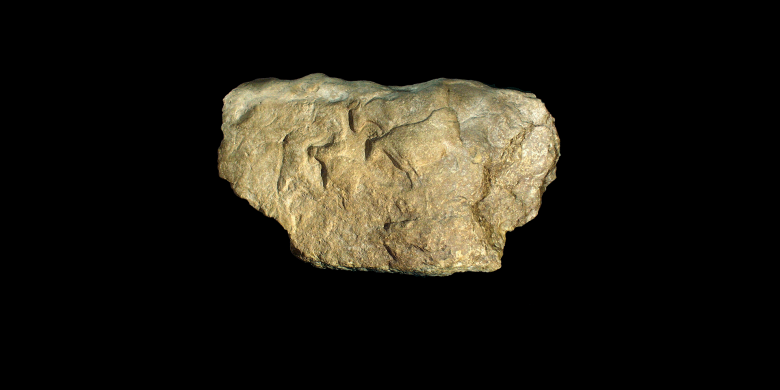Temporary exhibition from July 10 to November 29, 2021
Homo Faber : 2 million years of history of cut stone, from Africa to the doors of Europe
The exhibition HOMO FABER, "the one who makes", deals with the beginnings which, from the first steps to the first gestures, characterize the history of our lineage. The exhibition is a unique opportunity to present, for the first time outside of their original territories, exceptional original pieces from Africa and Georgia, tangible evidence of the manufacture of the "first stone tools" and their authors, the hominins.
The latter emerge in Africa from 6 or 7 million years (Ma). The African continent then functions as a mosaic of environments where a great diversity of animal species evolves, most of which have disappeared today. The first stone tools appeared around 3.3 Ma in Kenya, then the sites multiplied from 2.6 Ma in East and South Africa... without their authors, australopithecines, paranthropes or representatives of the Homo genus, being clearly identified.
For nearly 2 million years, the technology used to make stone tools in Africa diversified around the development or cutting of simple shapes, cut pebbles and sharp flakes. The shaping of stone appeared later, around 1.7 million years ago, with the first bifacial objects.
The material remains of this period are most often stone-cutting remains, the study of which informs us about the abilities of hominins to progressively select the materials, shapes, and dimensions of rocks suitable for cutting or shaping. From the first attempts to the most accomplished bifacial forms of the Acheulean period, the objects presented in this exhibition attempt to show how the circumvention of certain technical obstacles by the first cutters led to major technological innovations: selection and transport of certain lithic raw materials, apprehension of volumes, variety of percussions (thrown or on anvil), use of hard or softer percussors (wood).
The first evidence of an exit from the African cradle, now proven to be around 1.8 - 1.7 million years ago, is the work of a perfectly bipedal man, Homo ergaster, equipped with technical equipment described as Oldowayen. At the gates of Europe, the Georgian site of Dmanissi brings together spectacular anthropological remains and tools.
Man will then populate the whole of Eurasia, from Spain to the Indonesian archipelago. Curiously, it is not the individuals with the most advanced technical systems who gradually occupy this immense space. Then begins another history, towards new territories, new environments under different climates...
This exhibition constitutes a presentation of the very first times of Prehistory. It is the prologue to a journey that, between 1.5 million years and 10,000 years ago, will see the development of Neanderthals, modern humans and their symbolic expressions in Europe.
Curator :
Jean-Jacques Cleyet-Merle, Honorary General Curator
Scientific Commission :
Jean-Philippe Brugal, Directeur de recherche au CNRS-INEE, UMR 7269 Laboratoire méditerranéen de Préhistoire, Europe-Afrique (LAMPEA) CNRS, Aix-Marseille Université, ministère de la Culture, Maison méditerranéenne des Sciences de l’Homme, Aix-en-Provence
Ana Mgdelaze, Chargée de recherche au Muséum national de Géorgie, Professeur Free University of Tbilisi (Georgie)
Pierre-Jean Texier, Directeur de recherche émérite du CNRS, UMR 7269 Laboratoire méditerranéen de Préhistoire, Europe-Afrique (LAMPEA) CNRS, Aix-Marseille Université, ministère de la Culture, Maison méditerranéenne des Sciences de l’Homme, Aix-en-Provence
Director :
Nathalie Fourment, Director of the National Museum of Prehistory, Chief Curator of Patrimony, doctor in prehistory

Credits: Kokiselei 4, Kenya (1.76 Ma): partial biface rudimentary refashioning with a hard hammer of a large flat phonolite pebble. ©Pierre-Jean Texier | ©Mimaginephotography/Dreastime


